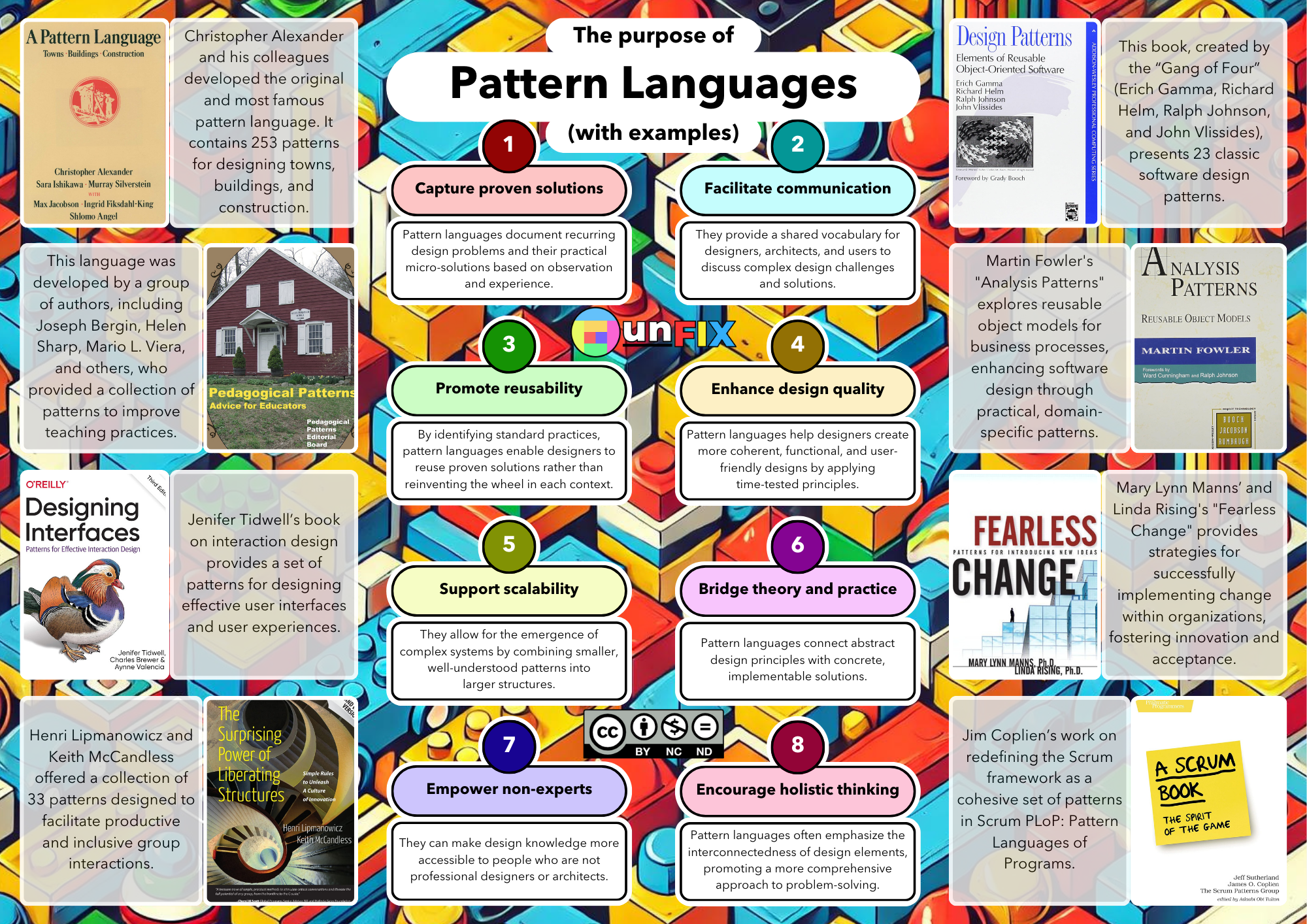The Purpose of Pattern Languages
Author: Jurgen Appelo
Pattern languages are a concept that emerged in urban design and architecture, serving several vital purposes. Originating from the work of architect Christopher Alexander in the 1970s, people have adopted pattern languages in various fields, including software development, change management, and organizational design.
The unFIX model is a pattern library, too. Why did we go for a collection of patterns rather than a framework? Because:
1. Capture proven solutions: Pattern languages document recurring design problems and their practical micro-solutions based on observation and experience.
2. Facilitate communication: They provide a shared vocabulary for designers, architects, and users to discuss complex design challenges and solutions.
3. Promote reusability: By identifying standard practices, pattern languages enable designers to reuse proven solutions rather than reinventing the wheel in each context.
4. Enhance design quality: Pattern languages help designers create more coherent, functional, and user-friendly designs by applying time-tested principles.
5. Support scalability: They allow for the emergence of complex systems by combining smaller, well-understood patterns into larger structures.
6. Bridge theory and practice: Pattern languages connect abstract design principles with concrete, implementable solutions.
7. Empower non-experts: They can make design knowledge more accessible to people who are not professional designers or architects.
8. Encourage holistic thinking: Pattern languages often emphasize the interconnectedness of design elements, promoting a more comprehensive approach to problem-solving.
The infographic below provides examples of pattern languages. I have half of these books, including the one by Christopher Alexander!
The purpose of pattern languages
Overall, pattern languages aim to make the design and development of complex and context-dependent solutions more effective and collaborative. For the unFIX model, that means organization design and the development of ways of working.
This topic is part of our mini-workshop Patterns of Change and Renewal. Check out when you can attend this workshop, or get the workshop box so you can run this workshop yourself with clients or colleagues!

